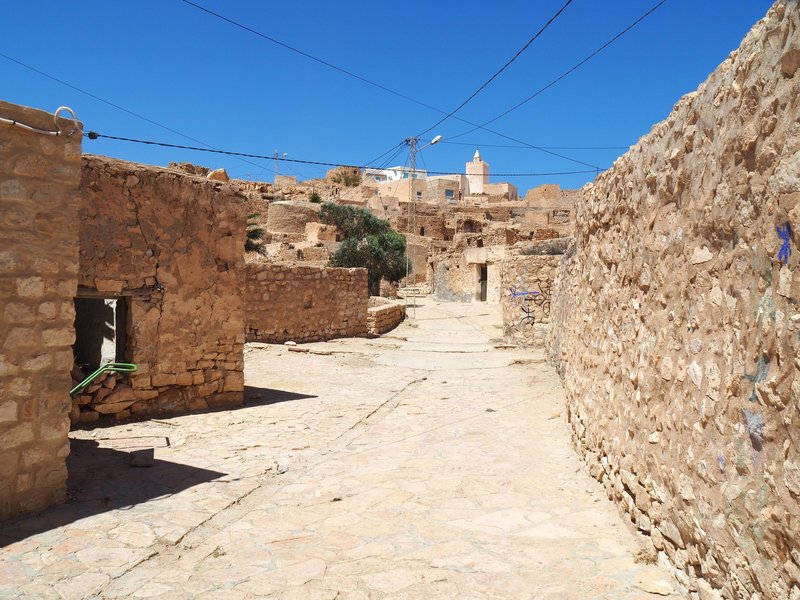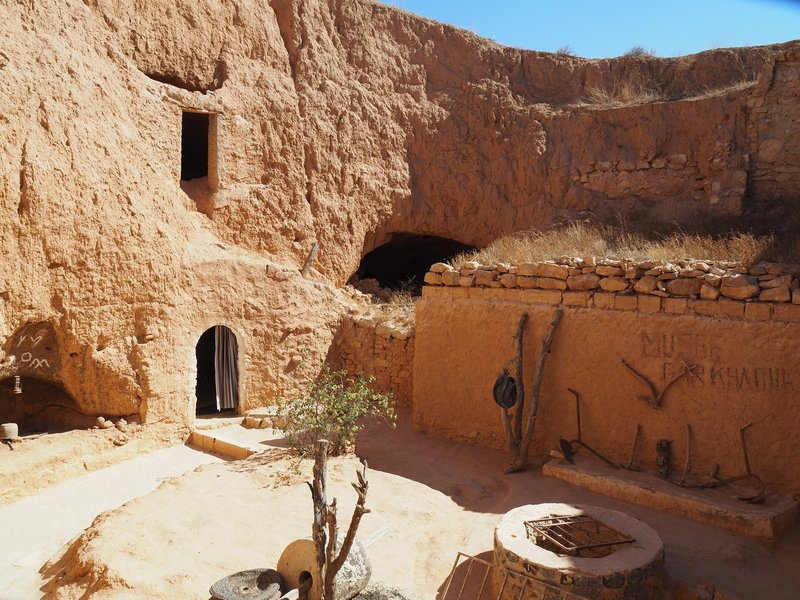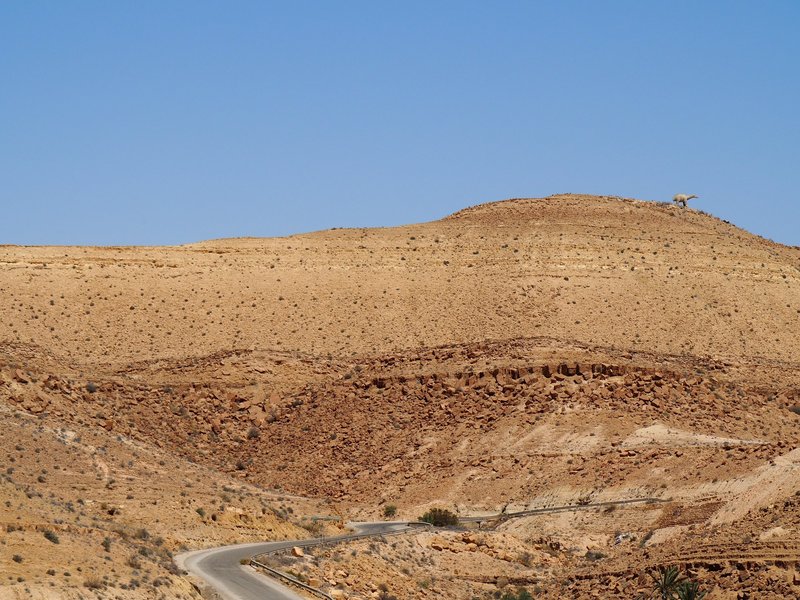marc Rouserez 1
Troglodyte houses and ksour of southern Tunisia
Habitat troglodytique et le monde des ksour du Sud (On tentative list)
Leaving the charming town of Kebili, I had planned to reach Ksar El Hallouf, but after leaving the P20 heading south towards Ksar Tarcine near Oum Ech Chia, entering an even more hostile desert, I was seized by an animal and irrational fear and I turned back. I already imagined that all four of Wilson's tires would burst simultaneously from the heat!
What a good decision!
Why? Because thanks to this, I was able to visit 1. The Berber village of Tamezret and 2. the troglodyte village of Matmata and 3. take a beautiful new asphalt road between Matmata and Ksar El Hallouf. These places are part of the serial property "Troglodyte habitat and the world of the ksour of southern Tunisia". Lucky.
I'm not going to list here all the places included in this serial site as there are so many of them and they are all undoubtedly worth visiting. As for me, I limited myself to visiting those already mentioned + Diar Armor which was on the route.
Tamezret is a Berber village reminiscent of Anatolia, so the scenery is very beautiful. I knew there was a Berber café at the top of the village, and I went there on foot. I pushed the absence of door. There, in the cool, half-light, was a young waitress and her grandfather. She served me a Berber coffee, which is actually a Turkish coffee except that she added orange blossom. Unscrewing with her, I learned that the Berbers have their own alphabet of 33 letters engraved on a pillar of the café.

The ancient village of Matmata is not strictly speaking a structured village as we understand it in Europe, but rather a vast hilly landscape burdened with a multitude of dwellings dug into the ground. For those who have seen Almodovar's film Dolor y Gloria, this is exactly how it appears, including the long tunnel that leads to the central courtyard open to the living quarters, sheds, and stables. I let Wilson catch his breath under a tree next to what must once have been a tourist office, and a guy accosted me on a motorbike. He asked me if I wanted to visit one of these dwellings, and I said OK. He took me on his motorbike to the Dar Khadija house-museum (5 dinars entry).
I asked him if he wanted anything in thanks for his service, but he refused. Such is the kindness of Tunisians! (And when a French-speaking Belgian writes the word "kind", it is often coated in sincerity like a praline is coated in chocolate!). As for the site's caretaker, he only asked for one thing: to go back to bed for a nap! I walked home and Wilson was still there, peaceful under his tree. Needless to say, this visit was interesting, especially since in the evening, after parking Wilson in the Dar Matmata hotel parking lot, I strolled along a dirt road and noticed that, in fact, the region is full of similar but invisible habitats since they are dug vertically into the earth!

Diar Armor is located a short distance from Matmata. This group of granaries has a wide esplanade where you can leave your vehicle for the night for a few dinars, but it didn't seem secure enough to me, and the buildings themselves seemed less authentic.
The next day I took the road to Medenine and turned right south towards Ksar El Hallouf by a track indicated on the Freytag & Berndt map but newly paved. The road does not pass far from the site "The marine Permian of Jebel Tebaga" but as the geological site itself is not visible from this splendid road, I did not mark it as "visited". Curiously, a dinosaur was waiting for me at a pass, I said hello to it but as it did not answer I thought it must be made of fiberglass or papier-mâché. This is curious because the period of the dinosaurs does not correspond to the Permian. Just in case, know that there is a small paleontological museum at the entrance to the town of Tataounine further south which unfortunately was closed.

It should also be noted that when leaving Matmata, I came across a road sign indicating entry to the Dahar geopark, which I was not aware of, and for good reason since it has not yet been recognized by UNESCO. This is a shame because it would make sense if we mentally connect what would justify the classification of the site "The marine Permian of Jebel Tebaga" and "Cave dwelling and the world of the ksour of southern Tunisia" as a natural and cultural site and the interactions between man and nature.
Ksar El Hallouf: The place is breathtaking in its complete isolation, but be careful to get there, it's a steep climb! I think that when you've seen one ksar, you've seen all the ksour (yes, we say ksar in the singular and ksour in the plural...). Seeing dozens of empty vaulted rooms side by side was enough for me because you quickly understand what their purpose was.
Of course, there remains the landscape...

Even though Almodovar's early scenes in his film Dolor y Gloria were filmed in similar habitats in Spain, which would mean that this site would not be exceptional, it would in my opinion fully deserve inclusion on the list of World Heritage sites given its size and authenticity, and then there are no ksour in Spain or elsewhere as close to troglodyte habitats and rocks dating from the marine Permian.
Comments
No comments yet.
